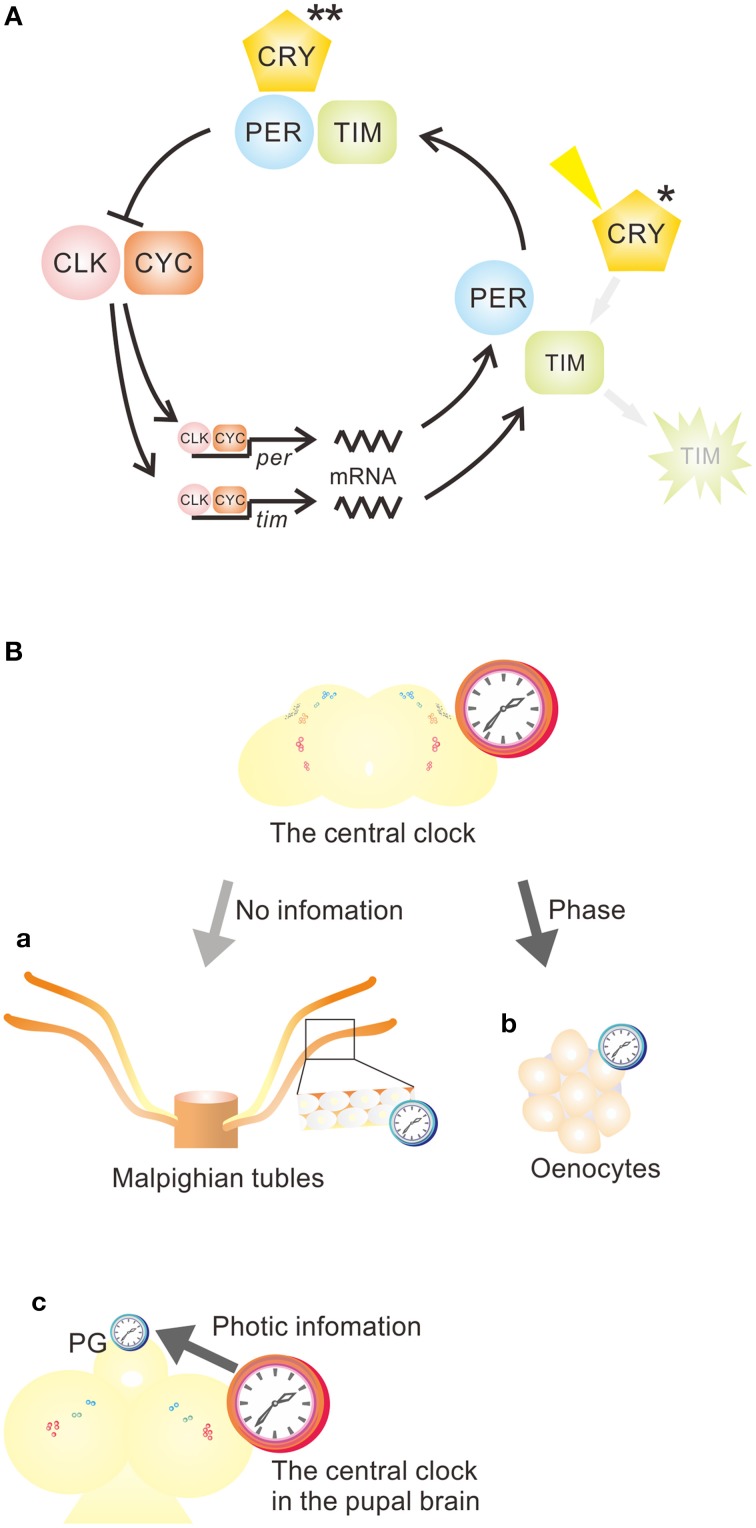Figure 1.
Function of CRY in peripheral circadian clocks and the relationship between central and peripheral clocks in Drosophila melanogaster. (A) The functions of CRY vary in peripheral circadian clocks. In most peripheral circadian systems, CRY functions as a photoreceptor (*) and a core component (**) of the clock. However, CRY acts as a photoreceptor (*), but not as a core component of the clock, in the epidermis, which controls cuticle deposition rhythm, and in the prothoracic gland (PG). CLK, CLOCK; CRY, CRYPTOCHROME; CYC, CYCLE; per, period; tim, timeless. (B) Various relationships between central and peripheral clocks. (a) Most peripheral oscillators are independent of the central clock. (b) Some peripheral oscillators, such as oenocyte oscillators, are a slave to the central clock, receiving phase information to maintain an appropriate phase relationship to the central clock. (c) Some peripheral oscillators, such as those in PG, receive light and temporal signals from the central clock to drive oscillation and coordinate molecular oscillation. See Table 1 for more examples.

